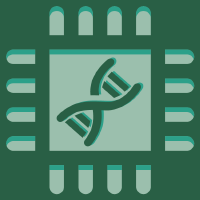Topic Editors



Advance and Applications of Fiber Optic Measurement: 2nd Edition
Topic Information
Dear Colleagues,
Optical fibers and fiber sensors have attracted wide interest in countless domains, including but not limited to aerospace, food processing, high-energy physics experiments, environmental monitoring, medicine, nuclear industry, oil and gas, railways, and structural health monitoring. Here, fiber optic sensors bring several advantages, such as high sensitivity and resolution measurements, low-cost implementation, small size and low weight, immunity to electromagnetic interference, chemical inertness, long-distance monitoring, and high multiplexing capability. This topic will focus on the latest developments and trends in fiber optic sensor-based measurement, covering recent improvements in related theory, design, fabrication, and application/validation. We warmly invite you to participate by submitting original research papers, communications, and review articles in order to provide useful insights into the present status and future outlooks in this area.
Dr. Flavio Esposito
Prof. Dr. Stefania Campopiano
Prof. Dr. Agostino Iadicicco
Topic Editors
Keywords
- fiber optic sensors and components
- interferometric sensors
- resonance-based sensors
- plasmonic sensors
- fluorescence
- physical sensors
- mechanical sensors
- chemical sensors and biosensors
- optoelectronic sensors
- specialty optical fibers and microstructures
- nanostructured materials and coatings
- fiber sensor packaging
- fiber sensor interrogation and instrumentation
Participating Journals
| Journal Name | Impact Factor | CiteScore | Launched Year | First Decision (median) | APC | |
|---|---|---|---|---|---|---|

Automation
|
- | - | 2020 | 26.3 Days | CHF 1000 | Submit |

Biosensors
|
5.4 | 4.9 | 2011 | 17.4 Days | CHF 2700 | Submit |

Fibers
|
3.9 | 7.0 | 2013 | 24.1 Days | CHF 2000 | Submit |

Photonics
|
2.4 | 2.3 | 2014 | 15.5 Days | CHF 2400 | Submit |

Sensors
|
3.9 | 6.8 | 2001 | 17 Days | CHF 2600 | Submit |

MDPI Topics is cooperating with Preprints.org and has built a direct connection between MDPI journals and Preprints.org. Authors are encouraged to enjoy the benefits by posting a preprint at Preprints.org prior to publication:
- Immediately share your ideas ahead of publication and establish your research priority;
- Protect your idea from being stolen with this time-stamped preprint article;
- Enhance the exposure and impact of your research;
- Receive feedback from your peers in advance;
- Have it indexed in Web of Science (Preprint Citation Index), Google Scholar, Crossref, SHARE, PrePubMed, Scilit and Europe PMC.

